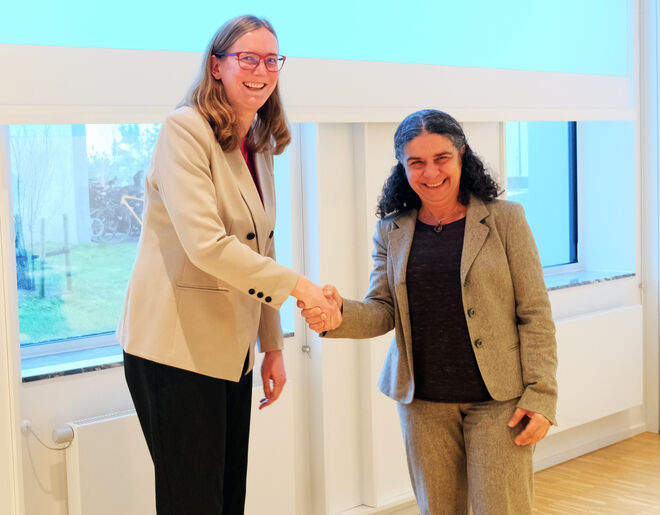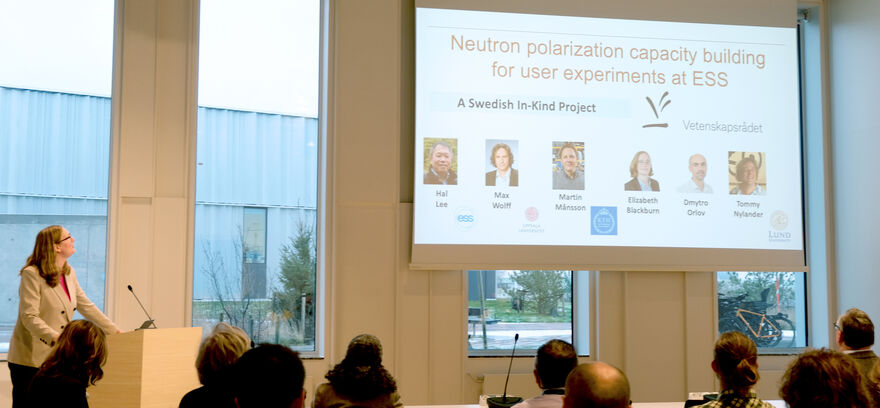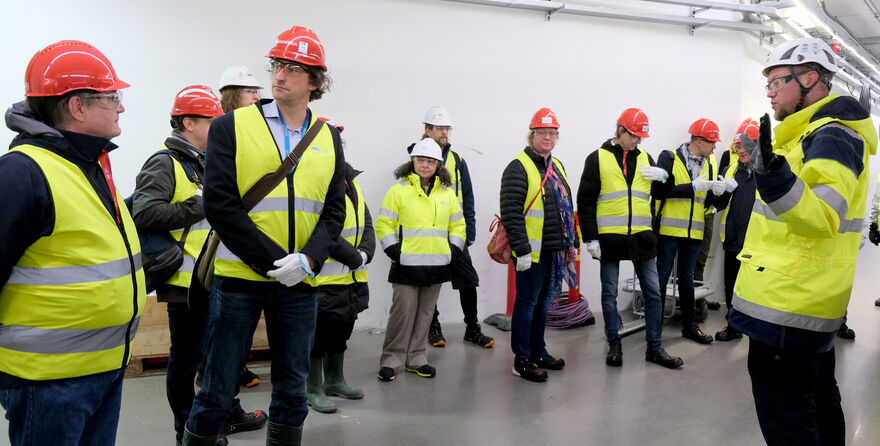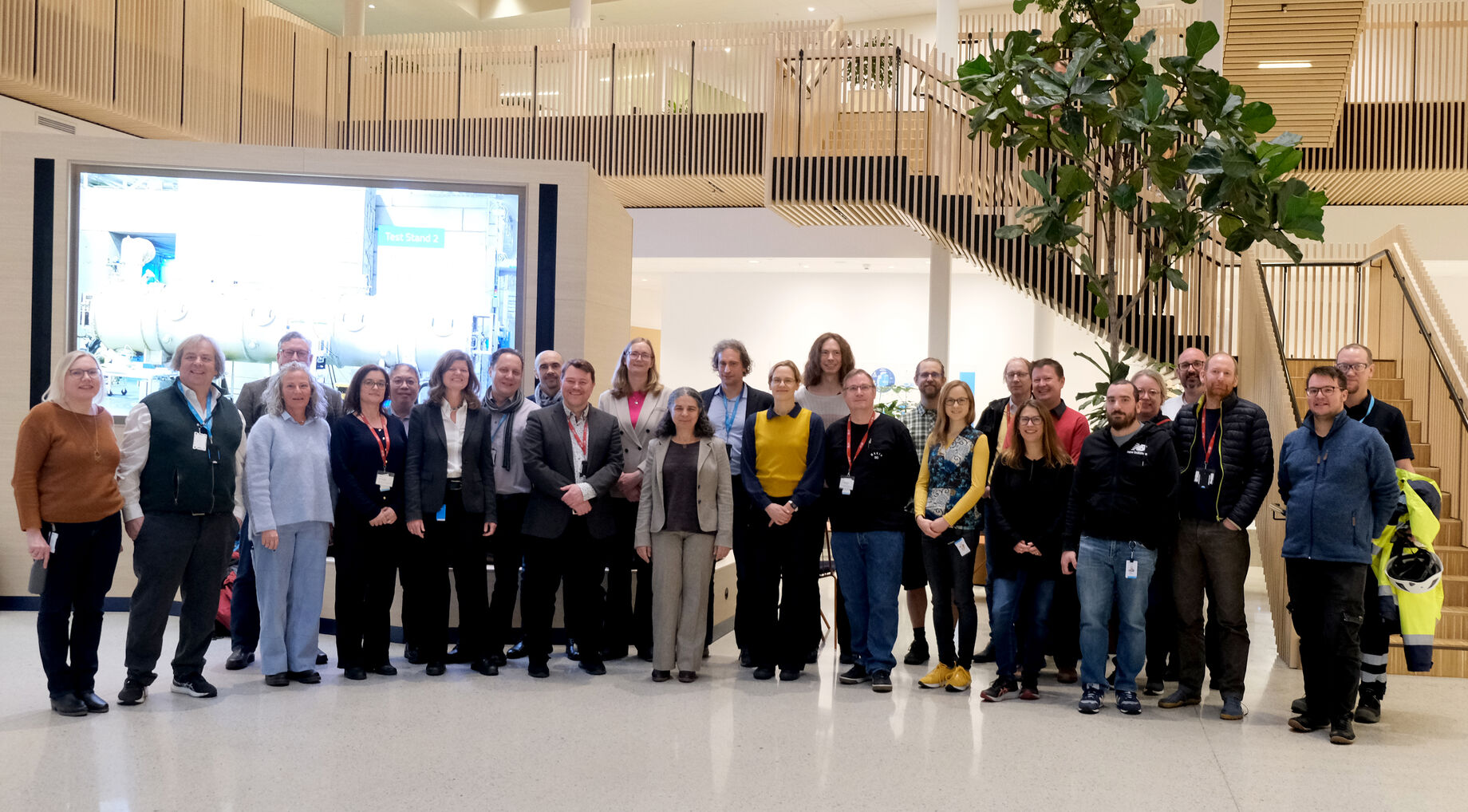
As one of the two ESS host countries together with Denmark, Sweden has strongly contributed to the ESS project from day one. There have been numerous collaborations with Swedish institutes during the construction phase but never under the in-kind mechanism – until now.
To strengthen the engagement of the Swedish scientific community in ESS, Sweden has now officially become part of the ESS in-kind community with a number of contracts agreed under the Initial Operations funding phase.
On Thursday a launch ceremony for the first Swedish in-kind contract was held at the ESS premises in Lund. At the event, the involved staff from ESS were joined by representatives from Lund University, Uppsala University, the Royal Institute of Technology (KTH) and the Swedish Research Council, to mark the start of this collaboration. Presentations of the projects covered by the contract were followed by a tour of the ESS facility.
Four projects are covered by the agreement, all focusing on the neutron instruments and support facilities that will serve the ESS science program:
- Deuteration Laboratory Services
- ODIN Hot Commissioning Scientist
- NMX Scientist Secondments
- Polarisation technologies
The contract is led and coordinated by Lund University, and includes contributions from the Royal Institute of Technology (KTH) in Stockholm as well as Uppsala University. The Swedish in-kind contracts have a total value of 2.2 MEUR.
Giovanna Fragneto, ESS Director for Science, is looking forward to fruitful collaborations:
“It is with pleasure that we finalise these contracts with Lund University, a very important collaborator for ESS. Combining our different expertise, we will create excellent experimental possibilities at ESS. These projects are also a great opportunity to strengthen the local and regional neutron science community, and create mutual benefits for LU and ESS.”
”We are very pleased to see these in-kind contracts in place”, says Viktor Öwall, Pro Vice-Chancellor at Lund University. “We are looking forward to deepening our collaboration with ESS, by getting more engaged in the technical development around the scientific instruments. This engagement constitutes a natural bridge between science using neutrons, development of instrumentation and lab services, and will also create an environment where students can play a part in the exciting developments at ESS.”
What is In-Kind?
In order to successfully construct a state-of-the-art science facility with novel technology, ESS is working with more than 40 European partner institutions and more than 130 collaborating institutions worldwide under the in-kind model. The ESS in-kind partners bring their knowledge, personnel and experience to the project in the form of In-Kind Contributions (IKC), or non-cash contributions.
The majority of the instruments, the target station and the accelerator are delivered as in-kind. Overall, about 30% of ESS's construction budget comes from in-kind contributions from European Partners.





























